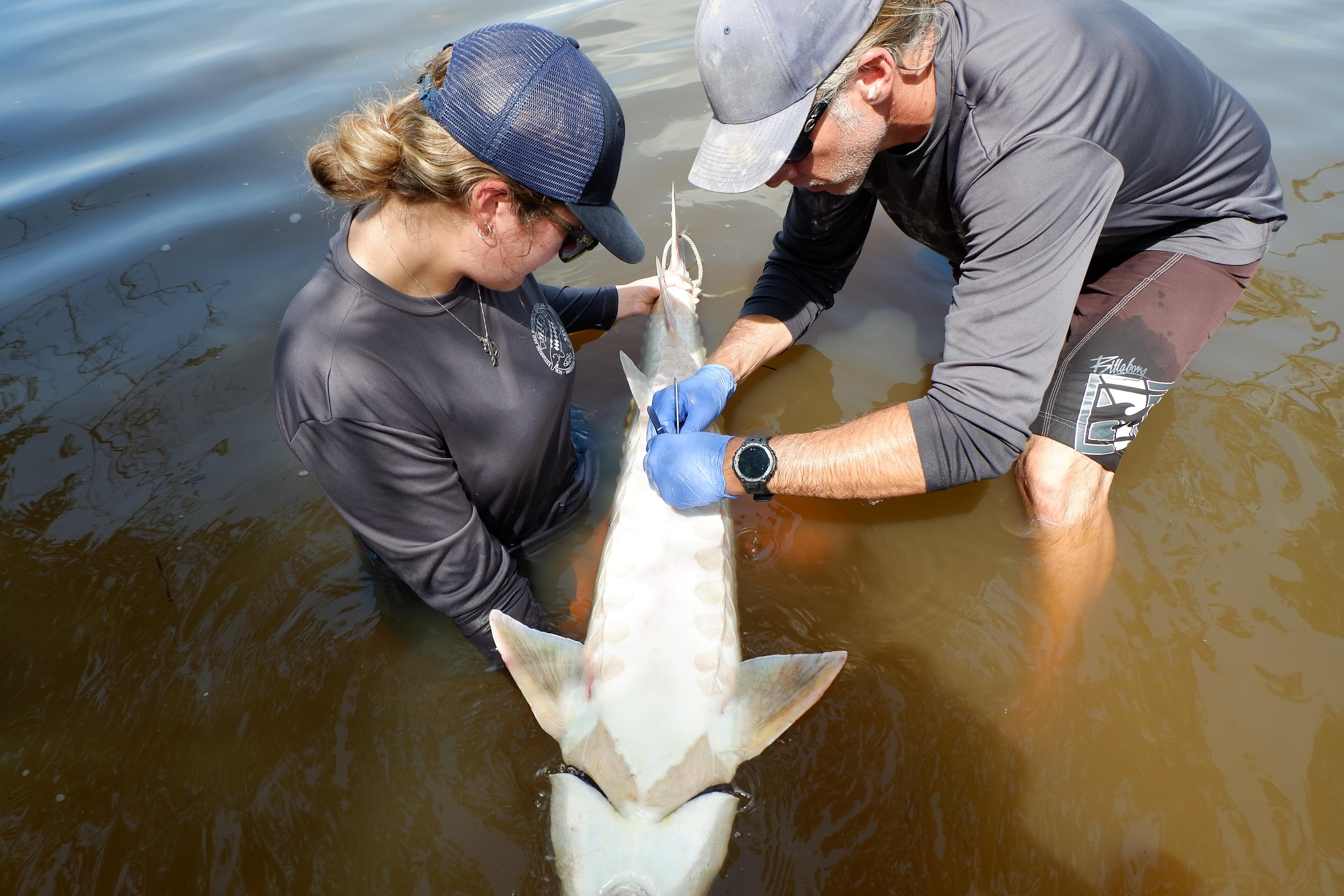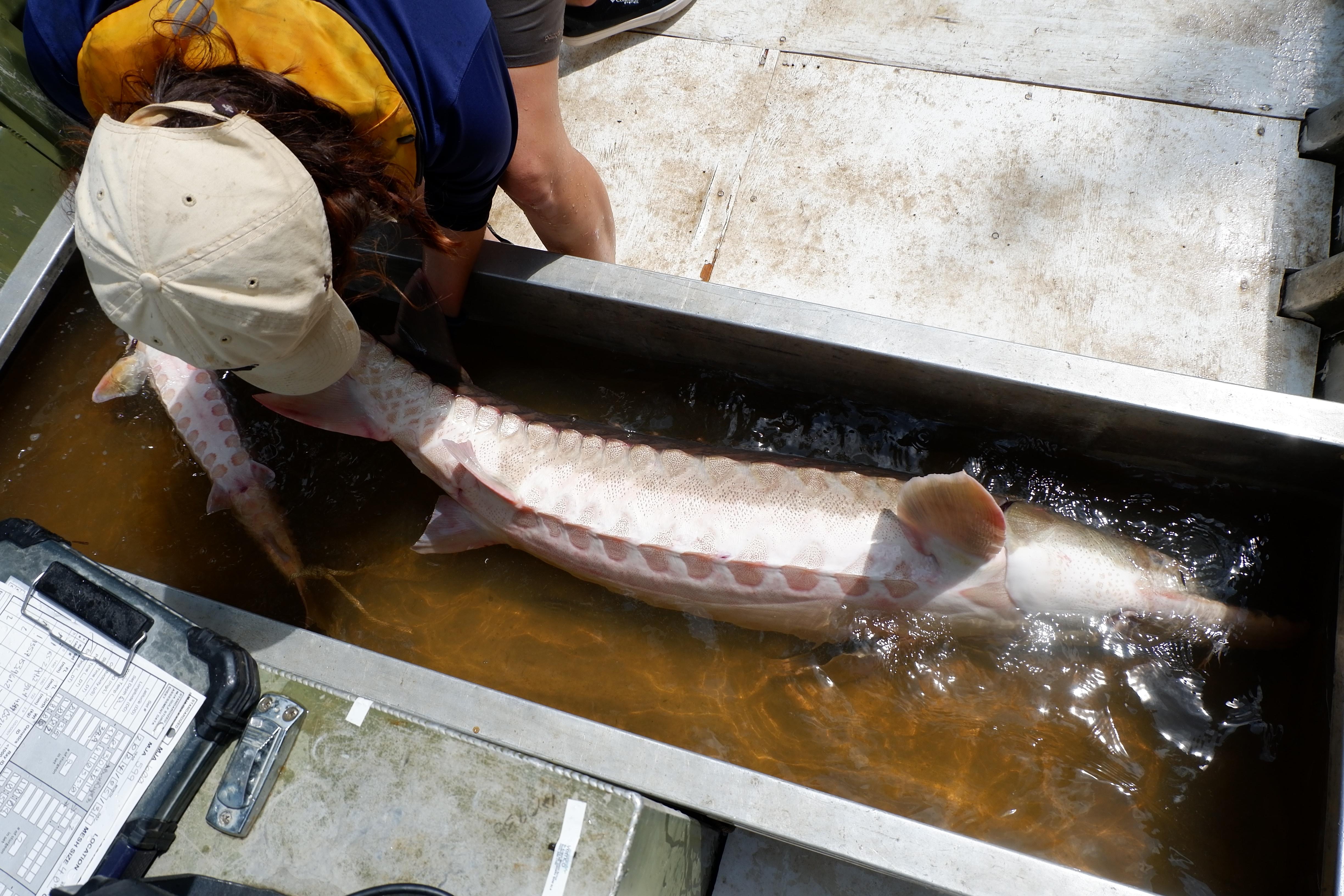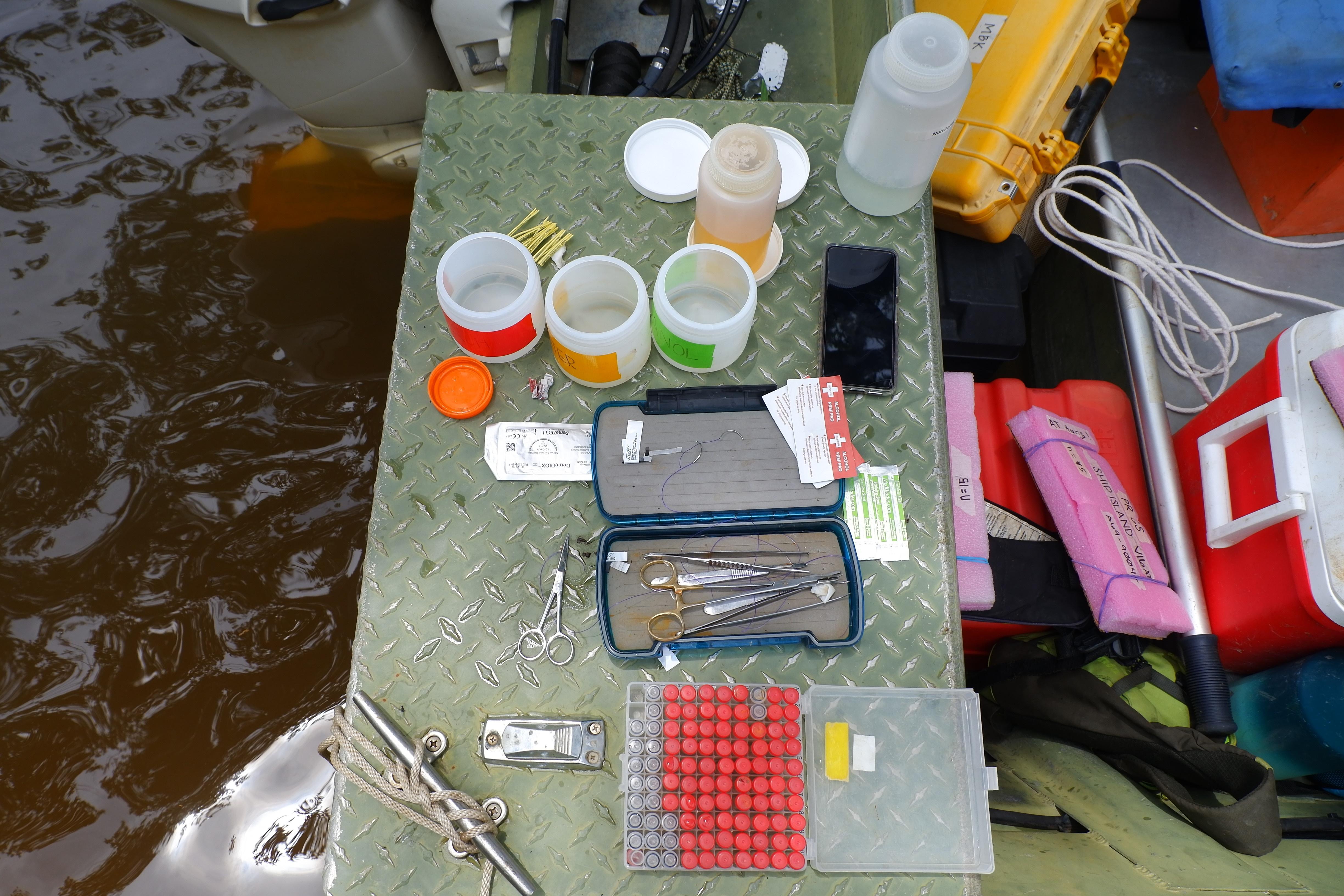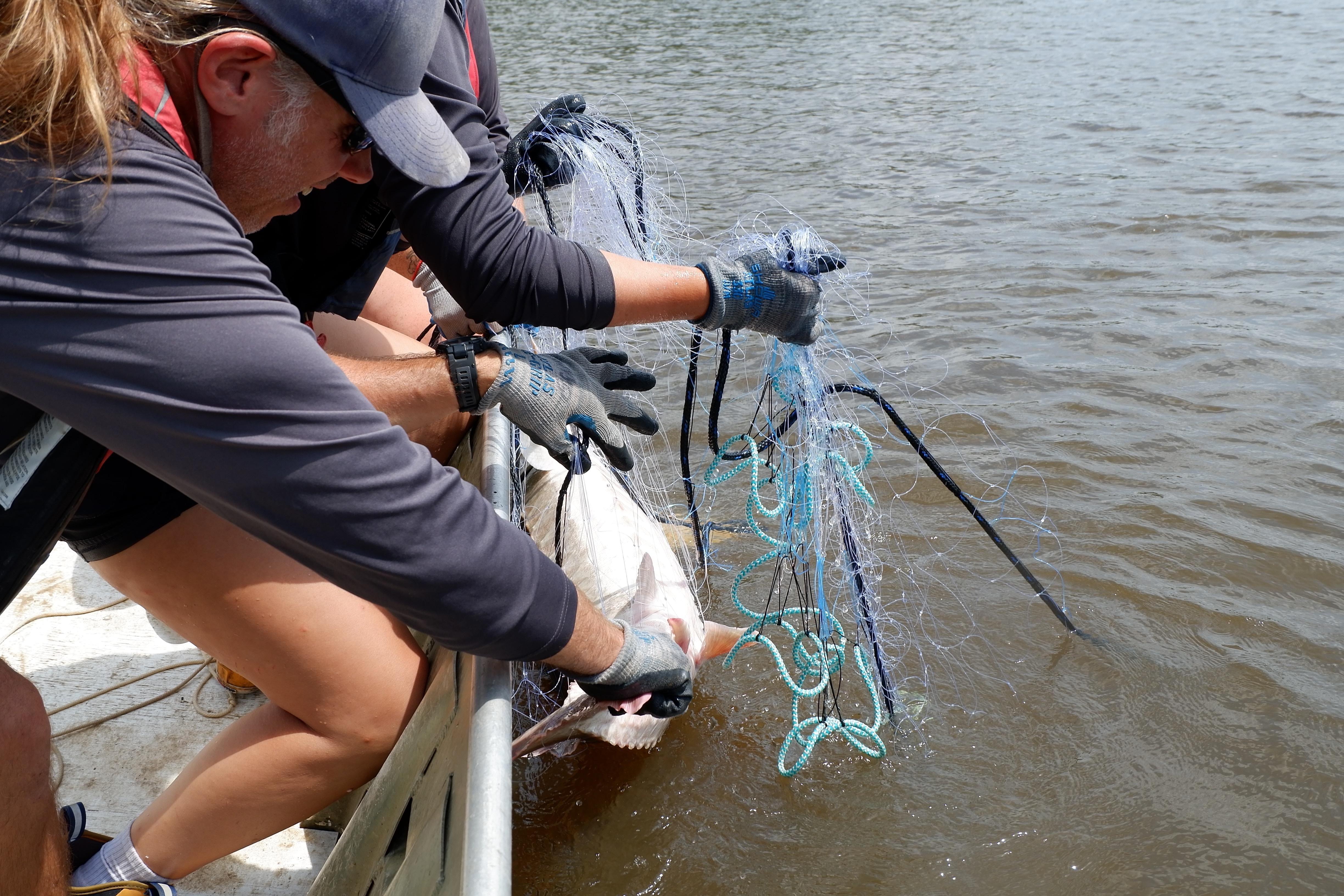Along the lower Pearl River, marking the border between Mississippi and Louisiana, it’s overcast and not yet hot when Mike Andres drops the first gill net of the day into the water.
“It's in those current break, low velocity locations, as well as cooler temperature locations that they tend to congregate,” said Andres.
“Usually, if we set in an area that has a number of fish slowly meandering in these locations, it's not really trying to set on them as they're returning or moving to different stretches of the river. It's more so just taking advantage of their biology.”
But those sections of rivers are increasingly rare across North America, and in Mississippi, as a result of navigation projects like dredging out channels that greatly impact species like Gulf Sturgeon by drastically altering the flow of the river itself.
Combined with the construction of dams or other structural water control measures that block their paths further upstream, the species has largely been confined to only a few remaining habitats, disrupting a well-established migration pattern.
Andres says the furthest he’s aware of any Gulf Sturgeon traveling up the Pearl River was one that, thanks to unusually high water levels, made it over the low-head dam near Belhaven Beach in Jackson several years ago, to the lower-mouth of the Ross Barnett Reservoir.
Construction of the Reservoir northeast of Jackson in the 1960's had an especially negative impact on Mississippi’s Gulf Sturgeon – among several other species and ecosystems throughout the Pearl River basin – even hundreds of miles downriver from its spillway in Rankin County.
By holding, and then releasing, large amounts of water south, operation of the Reservoir raises the water table of the river rapidly, inundating its banks.
But when the flow is suddenly shut off, much like closing a faucet, the river falls just as quickly and banks are left more susceptible to collapsing or eroding, adding more sediment to the river and permanently altering the floodplain.
Prior to its construction in 1962, Gulf Sturgeon within the Pearl River system were known to travel as far as the river’s headwaters, north of today’s 33,000 acre Reservoir, to spawn or seek shelter.
Today there are no known spawning sites throughout the Pearl River basin, and only one on the Bouie River, a tributary to the Pascagoula River, that the lab located in 2023.
Andres says part of their work is finding those spawning sites, in addition to identifying how and where the fish move through river systems, to help officials better protect them.
‘Like going back in time’
On the lower Pearl River, that work is done among some of the last remaining tracts of bottomland hardwood forest in the United States.
No more than 20 river kilometers from the Mississippi Sound, this section of the Pearl is much wilder than those further north, near the Reservoir. Original growth forest of cypress, water oak and tupelo line either riverbank for miles, abundant with osprey and hawk nests in the canopies of bald, twisting branches.
It’s also here where some of the last recorded sightings of the critically endangered Ivory-billed Woodpecker have occurred – believed by some to be definitely or probably extinct.
Mike Andres says it’s no coincidence that both species might be in the same stretch of the Pearl. Instead, it’s emblematic of the ecosystem, and its biodiversity, persisting.
“The west side is beautiful salt marsh, and this section of the Pearl has so much excellent flood swamp. It’s absolutely beautiful,” said Andres. “It feels like going back in time.”
After the crew sets a 300-foot wide, 6 foot deep gill net across the river, it's only a matter of minutes before they pull it, and two sturgeon are on board, placed in a live well.
From that point it's a bit of a race for the researchers, who are working against the clock with a notoriously sensitive species.









